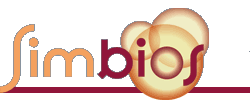Title: Image-Based Mechanical Characterization of Soft Tissue using Three-Dimensional Ultrasound Imaging
Abstract:
Computational models of tissue mechanical response are beginning to play a significant role in modern computerized medicine and have become integral components of image-guided surgery and interventions. Such image-guided tasks require close interplay of computational biomechanical models with preoperative and intra-operative imaging. The development of appropriate models for the mechanical behavior of soft tissues is challenging due to the inherent complexities of the material response, and the limitations on testing protocols associated with in-vivo settings. Current in-vivo soft tissue testing is dominated by indentation due to the simplicity of the tool configuration, and low-risk of injury associated with the procedure. Much of the information related to the interplay between shear and bulk compliance in the complex deformation field beneath the indenter is lost when capturing the single (time-displacement-force) output of the tool. Therefore, supplemental experimental methods, such as secondary indentation sensors are necessary for well-conditioned parameter identification.
Image-based characterization methods are a promising alternative solution, as they provide the means for noninvasive, in-vivo measurement of the tissue response with improved sensitivity and uniqueness of the recovered material parameters. I will present a general inverse finite-element modeling approach to identify an appropriate constitutive framework and corresponding model parameters using full-field volumetric deformation data obtained from 3D ultrasound (3DUS) imaging of porcine liver in indentation. This approach enriches the traditional force-displacement indentation response with the measurement of volumetric deformation and provides good sensitivity to parameters governing the bulk response of the material. The proposed method is independent of imaging modality and constitutive law, suggesting potential applications for various tissues and scales (i.e. nanoindentation, confocal microscopy, etc.).

